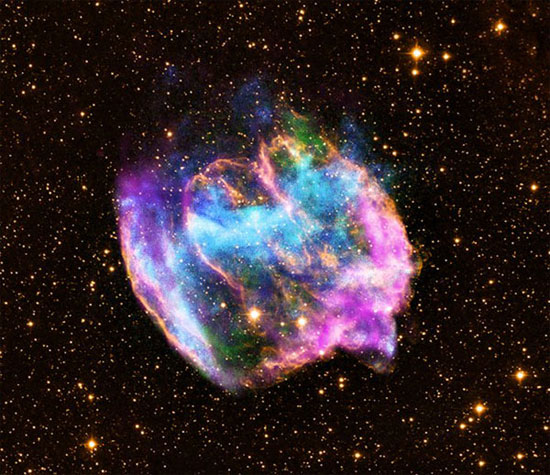Earth used to catch supernova dust
New research shows that a supernova explosion may have left a biological 'mark' on the ancient Earth's surface.
The specimen taken from the Pacific shelf may hold evidence of a distant supernova explosion, which rained high-energy particles on Earth several million years ago.

Supernova explosions are a special phenomenon of the universe - (Photo: NASA)
Shawn Bishop, a physicist at the Technical University of Munich (Germany), said sediments extracted from deep sea cores could contain radioactive iron elements emitted from a supernova that took place from long.
These traces are preserved in fossils of iron-loving bacteria deep in the sea floor.
Speaking at an American Physical Society event in Denver, Bishop said if the findings were confirmed, this would be the first biological evidence of a supernova explosion.
Accordingly, the sediment core contains iron isotope 60, which is not present on Earth, according to a Nature report.
While 60 iron content is quite low, the only place to find this form of sediment is in the seabed layer dating back 2.2 million years.
- Core Earth originated from supernova?
- The first evidence of the origin of cosmic dust formation
- Build 3D core map of a supernova
- The supernova explosion can destroy Earth from 50 light years
- Things you didn't know about the Nebula
- The supernova explosion is 10.5 billion light-years away from Earth
- Supernovae can cause extinction 2.5 million years ago
- The supernova explosion is 55 million light-years from Earth
- Learn about supernovae and supernovae
- Discover new supernova
- Dust-producing asteroids can combat climate change on Earth
- Photos, videos and three-dimensional models of giant supernova
 Van Allen's belt and evidence that the Apollo 11 mission to the Moon was myth
Van Allen's belt and evidence that the Apollo 11 mission to the Moon was myth The levels of civilization in the universe (Kardashev scale)
The levels of civilization in the universe (Kardashev scale) Today Mars, the sun and the Earth are aligned
Today Mars, the sun and the Earth are aligned The Amazon owner announced a secret plan to build a space base for thousands of people
The Amazon owner announced a secret plan to build a space base for thousands of people